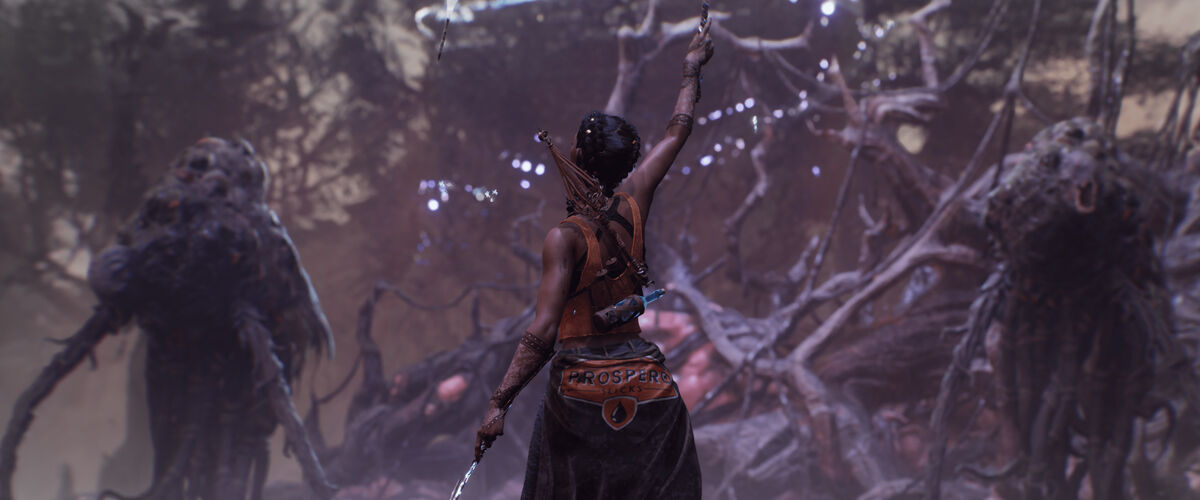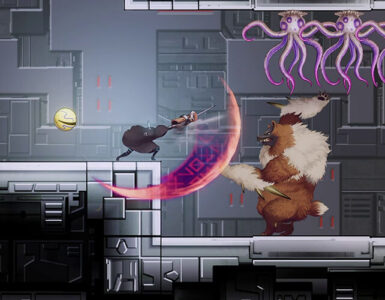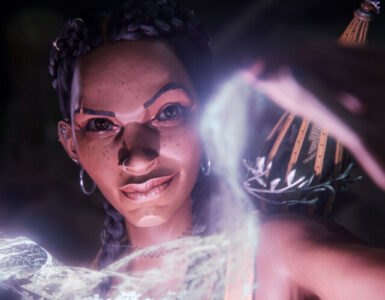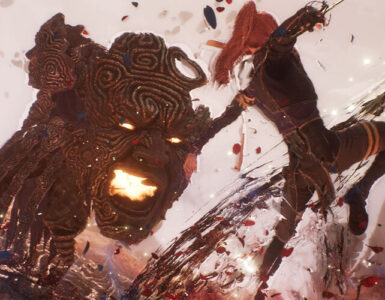Never let it be said that Compulsion Games plays things safe. The team behind 2013’s Contrast and 2018’s We Happy Few may not have the best track record with critical reception, but there’s respect to be found in going off the beaten track and embracing the adventurous spirit. With the former, the Canadian studio explored a noir atmosphere aesthetically inspired by Belle Epoque and Art Nouveau, while the subsequent action-adventure title took a stab at blending dystopian fiction and alternate history with elements from other genres.

The studio’s latest, South of Midnight, continues to oppose convention by fleshing out a mythical setting rarely seen in popular culture. Inspired by macabre folktales of the American Deep South, it unravels a tapestry brimming with vengeful spirits, grief-stricken souls, shadowy cryptids, and more fantastical creatures – inhabitants of a beautifully woven world rooted in magical realism. It paints an intriguing picture and is enough to stir up mild curiosity at first glance, only to turn into fervent enthusiasm when a one-and-a-half-hour preview brought more of its bold potential into focus, starting with its woman of colour protagonist: Hazel.
Spanning the entirety of the game’s third chapter, it follows her journey into a hurricane after losing her mother to the resulting flood, where she discovers a newfound power, Weaving. Along the way, Hazel encounters the ghost of Mahalia, a Weaver of the past who guides and teaches her new abilities to confront formidable foes known as haints, while untangling the past of her family and those around her.
It’s a fitting ode to a famous line in William Faulkner’s Southern Gothic novel ‘Requiem of a Nun’, “The past is never dead. It’s not even past,” especially since the literary figure was a major influence for South of Midnight. But it doesn’t take long to understand why the upcoming title stands out among the crowd: instead of traditional 2D animation or the usual hyperrealism, players are treated to a sparsely employed stop-motion flair that bears similar echoes of Guillermo del Toro’s 2022 film Pinocchio.

The bold, striking look certainly makes for an interesting choice in the action-adventure space, where fluid motion and crisp follow-through delivery are the norm. To the untrained eye, the choppy action can be easily mistaken for frame rate drops and may prove divisive for those who are particular about their frame rates. It’s not a flawless execution by any means, as the effect grows inconsistent in certain situations; yet, the upcoming title wears this sandpapered charm well, adding a welcome touch of personality to its already unique aesthetic identity.
Pulling from real-world influences, the surreal landscape establishes a perfect playground complementing its handcrafted stylings. Paying homage to the game’s Southern Gothic roots, which trace back to early Gothic tradition, it hides a more sinister and gritty presence beneath a polished, mellow veneer, creating an equally lively and desolate ambience. An uptick in mood is conveyed through various signs of life, such as roaming wildlife, grassy fields, and warm sunlight, with gloomy hues and dilapidated structures representing the flip side.
The design philosophy carries over to human characters and creatures in South of Midnight, and the newly introduced figures in Chapter 3 are no exception. Whether it’s the talking catfish (literally called Catfish), a former musician named Rhubarb, or the title’s first mythical creature Benjy, the distinctive look that each dons serves to reflect their being. Catfish, for instance, is evocative of the Cheshire Cat from Alice in Wonderland with its penchant for speaking in riddles and aged wisdom, playing into its role as Hazel’s guidepost of sorts. Meanwhile, the guilt of Rhubarb’s past actions is etched in his frail and closed-off demeanour.
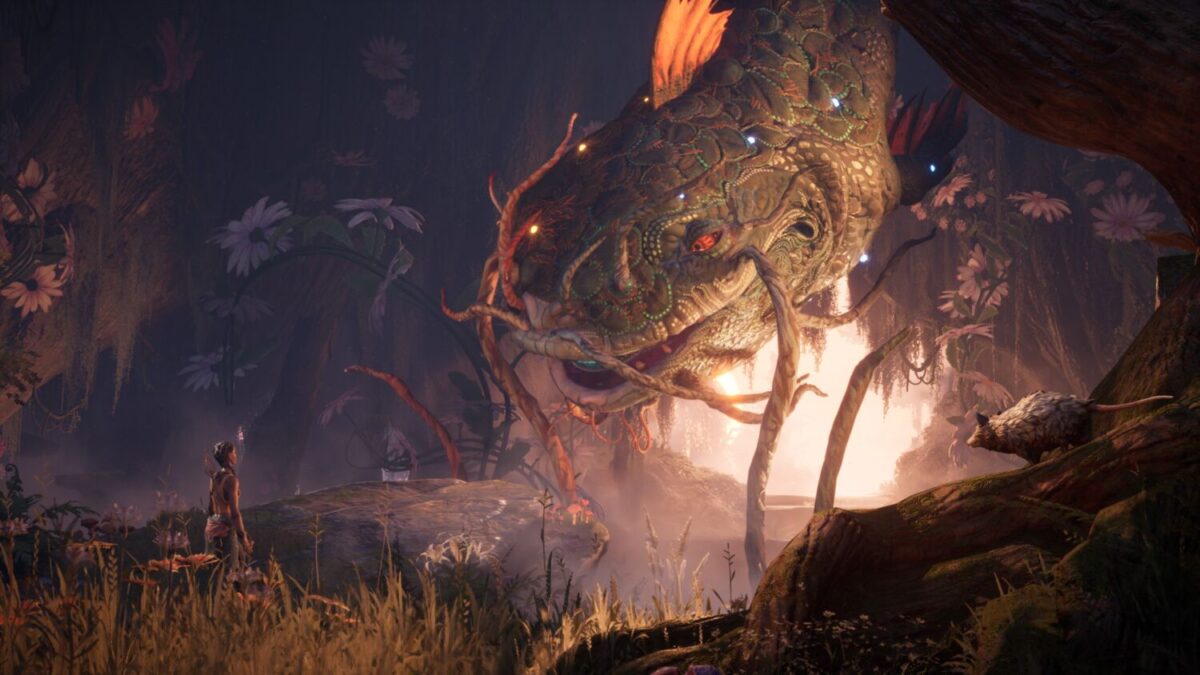
There wasn’t enough time to fully grasp the essence of Hazel’s personality, but she’s easy to like. Voiced by Adriyan Rae (Vagrant Queen, Chicago Fire), who shares motion capture duties with Nona Parker Johnson (Fear the Walking Dead, Mayor of Kingstown), the young weaver brings snark, fiery confidence, and a bleeding heart to the table, alongside a dose of misfit tendencies and what seems to be a complex about disappointing people.
And it’s no wonder – as a weaver, Hazel’s abilities are rooted in helping others resolve their trauma and repair broken bonds. It’s a heavy responsibility to bear, and the title sets aside some time for players to bask in the process, before rewarding them with an emotional payoff. In the preview, the narrative sees her tracking down the memories of two brothers and trapping their pain in a blue bottle, setting the stage to close out on a heartfelt folk song. It’s lyrical storytelling at its best, built up from a string of banjo instrumentals.
The ability to stitch elements together isn’t confined to narrative workings, as navigation is also built around it. South of Midnight features familiar platforming elements and players will be able to jump, double jump, run across walls, and glide their way around bayous, swamps, and vegetation, with the occasional prerequisite to turn ghostly platforms into temporarily solid ground. All these elements come into play nicely, creating a natural and fluid momentum that culminates into a thrilling chase sequence at the end of Chapter 3.

There are also hidden, easy-to-miss paths scattered throughout the map, luring players with glowing bits of Floof, the game’s currency, which can be used to learn new skills or upgrade existing ones. When exploring, players should be careful of where they land – the margin of error here is a lot tighter than expected, such that a slight misstep is enough for them to plummet into the swampy waters and meet their demise.
Despite the story-heavy focus, the game still leaves room for some combat. Integrating weaver powers into its core mechanics means Hazel can freeze, pull, and push enemies, in addition to run-of-the-mill maneuveurs like a regular slash, an aerial attack, and dodging. Health is a precious commodity, with the only sources of healing being a one-use totem (presented as a green strand) or the essence of felled haints, obtained by unravelling their corpse.
The battle system is easy to learn but hard to master, requiring perfect timings for deflecting projectiles and last-minute dodging, which damages and knocks foes back. Three enemy forms were shown in the preview, each with their own attacking style – the tall apparition, for example, attacks swiftly by rushing forward, while its nest-shaped counterpart spews exploding insects. Armed with only three spells at the start, players can access a small skill tree to unlock up to nine special moves and upgrade each of their magical abilities thrice. Alas, combat is easily the weakest link here: the gameplay loop gets repetitive too quickly amid a crisp flow, lacking the magnetic allure the rest of the experience offers. The lock-on system isn’t the most intuitive, either.

It remains to be seen if South of Midnight will live up to the hype, but there’s plenty to be optimistic about. The visual stunner has dished out the precursor to its promising potential, offering an addictive whiff of a beautifully woven world that seems well worth the risk. Maybe third time will be the charm for Compulsion Games.
South of Midnight releases on 8 April 2025 for Xbox Series X|S and PC.

